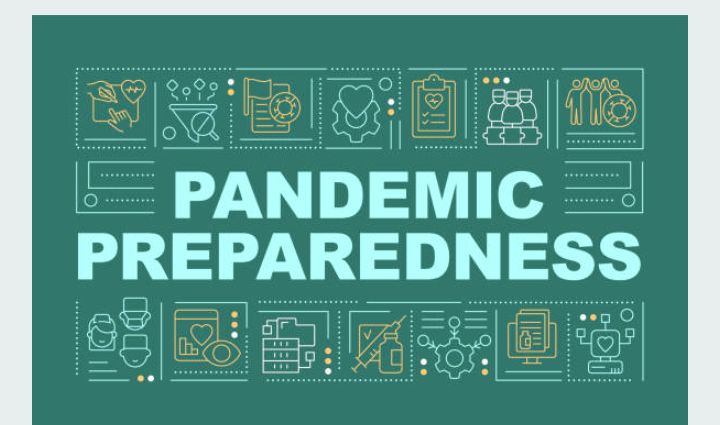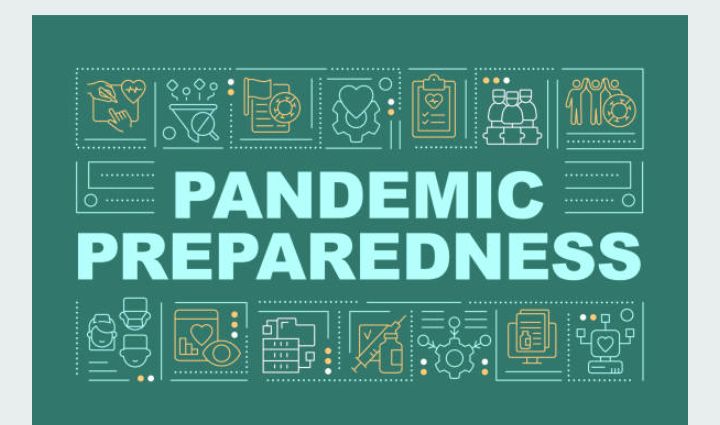Introduction.
The COVID-19 pandemic was a wake-up call that highlighted the vulnerabilities in global healthcare systems. It exposed gaps in preparedness, coordination, and response that left countries grappling with severe consequences. This experience underscored the critical need for robust health systems capable of managing not only current healthcare demands but also future pandemics. As we look toward a future with the potential for new infectious diseases, strengthening pandemic preparedness is paramount.

Lessons Learned from COVID-19.
1. Importance of Early Detection and Rapid Response
One of the most important lessons from COVID-19 is the critical value of early detection. COVID-19 spread worldwide in a matter of weeks, overwhelming healthcare systems and forcing governments to implement lockdowns. Effective pandemic preparedness requires an infrastructure capable of early warning and rapid response. This includes not only having sophisticated surveillance systems but also the means to analyze and disseminate information quickly and accurately. During COVID-19, delays in recognizing the virus’s potential impact allowed it to spread, underscoring the importance of coordinated global efforts to track and respond to emerging pathogens.

2. Resilience in Healthcare Infrastructure.
Hospitals and healthcare systems worldwide struggled to accommodate the sudden surge in patients during the pandemic. Many facilities were pushed beyond capacity, lacking critical resources such as ICU beds, ventilators, and personal protective equipment (PPE). Building resilient healthcare infrastructure is crucial to future pandemic response. This resilience encompasses physical resources, such as sufficient beds and equipment, as well as trained personnel who can respond to crises. Investing in stockpiles of essential supplies, cross-training medical staff, and preparing emergency response plans can increase the resilience of healthcare systems.
3. Public Health Communication and Trust.
Public communication emerged as a significant challenge during the pandemic. Misinformation about COVID-19, vaccines, and treatments proliferated, making it difficult for health authorities to establish trust with the public. Effective public health communication is a cornerstone of pandemic preparedness. It requires transparency, consistency, and engagement with the public to foster trust and encourage compliance with health guidelines. By involving local leaders and leveraging social media responsibly, public health officials can better manage misinformation and improve community cooperation.
4. Global Cooperation and Vaccine Distribution
The pandemic illustrated the importance of global cooperation in addressing a health crisis. Initiatives like COVAX, which aimed to provide equitable access to vaccines, faced challenges in distribution and resource allocation. Wealthier nations secured vaccines for their populations, leaving low-income countries behind. Future preparedness will require more robust frameworks for global cooperation, ensuring that medical countermeasures like vaccines and treatments are accessible to all nations. Global solidarity and fair distribution policies are crucial to prevent health inequities that can prolong a pandemic.
Key Elements of Pandemic Preparedness
1. Strengthening Surveillance Systems
An essential component of pandemic preparedness is a well-developed disease surveillance system. Surveillance systems should integrate local, national, and global networks to monitor potential threats. By leveraging technology, such as artificial intelligence and machine learning, these systems can detect patterns and predict outbreaks with greater accuracy. For instance, the integration of data from hospitals, laboratories, and travel hubs can provide a clearer picture of emerging threats, allowing health authorities to respond more swiftly.
2. Investment in Research and Development.
The rapid development of COVID-19 vaccines demonstrated the power of focused research and development (R&D). To prepare for future pandemics, continuous investment in R&D is necessary. This includes the development of diagnostic tools, vaccines, and therapeutics for various pathogens. Collaborative efforts between governments, private companies, and academic institutions can lead to innovations that improve preparedness. Fostering a culture of open science and data sharing can also accelerate advancements in healthcare and pandemic response capabilities.
3. Enhancing Healthcare Infrastructure and Workforce Training
Healthcare infrastructure must be flexible and capable of scaling up during a pandemic. This includes not only physical resources, such as beds and medical equipment, but also trained healthcare personnel. Regular training in emergency response protocols is essential, as is cross-training in diverse medical disciplines to ensure adaptability in crisis situations. Furthermore, mental health support for healthcare workers, who often face enormous stress during pandemics, is a critical aspect of maintaining a resilient workforce.
4. Improving Supply Chain Resilience
The pandemic exposed vulnerabilities in global supply chains for essential medical supplies, including PPE, ventilators, and medications. Shortages can hinder response efforts and put lives at risk. Building resilient supply chains involves diversifying suppliers, maintaining strategic stockpiles, and establishing production capabilities within key regions. Governments and private sectors must collaborate to create flexible supply chains that can respond quickly to surges in demand, reducing the risk of shortages during a crisis.
5. Developing and Testing Emergency Preparedness Plans
Having a pandemic preparedness plan is essential, but regular testing and updating of these plans are equally important. Simulation exercises that involve all levels of government, healthcare institutions, and community organizations can help identify weaknesses and improve coordination. These drills should cover a range of scenarios, including severe pathogen outbreaks and high rates of vaccine hesitancy, to ensure that response teams are ready to handle diverse challenges.

The Role of International Organizations Organizations like the World Health Organization (WHO) play a crucial role in coordinating global health responses. The WHO can provide guidelines, mobilize resources, and facilitate international communication. However, the pandemic revealed limitations in the WHO’s influence, especially when countries opted to prioritize national interests. For future preparedness, strengthening the mandate and funding of international health organizations may enable them to respond more effectively and equitably. Additionally, organizations should work to standardize data sharing and reporting practices, ensuring that all nations contribute to a transparent and collaborative approach to health crises.
Future Directions
1. One Health Approach
The One Health approach recognizes the interconnectedness of human, animal, and environmental health. Many emerging infectious diseases, including COVID-19, originate from animal reservoirs. By monitoring animal health and addressing environmental factors, such as habitat destruction and climate change, the One Health approach seeks to prevent diseases before they reach human populations. This holistic strategy can significantly reduce the risk of zoonotic diseases and improve overall pandemic preparedness.
2. Strengthening Health Equity.
Health equity is essential to a successful pandemic response. Ensuring that all communities, regardless of socioeconomic status, have access to healthcare, vaccines, and other resources reduces the spread of disease and prevents health disparities. Addressing structural inequalities and investing in underserved communities is not only a moral imperative but also a practical strategy for pandemic control. A future-focused approach to health equity will create a more resilient global population that can withstand health crises.

3. Embracing Technological Innovations
Technology played a critical role in the COVID-19 response, from telemedicine to digital contact tracing. Future pandemic preparedness plans should continue to explore innovative technologies, including genomic sequencing for tracking virus mutations, AI-driven predictive models, and digital platforms for rapid information dissemination. By embracing these tools, health systems can become more agile and responsive to emerging threats.
Conclusion
The COVID-19 pandemic was a pivotal event that underscored the urgent need for improved health and pandemic preparedness. By learning from past experiences, investing in research and infrastructure, and fostering global cooperation, we can better equip ourselves for future pandemics. The path forward involves a commitment to resilience, adaptability, and equity, ensuring that health systems worldwide are prepared to protect public health in times of crisis.





